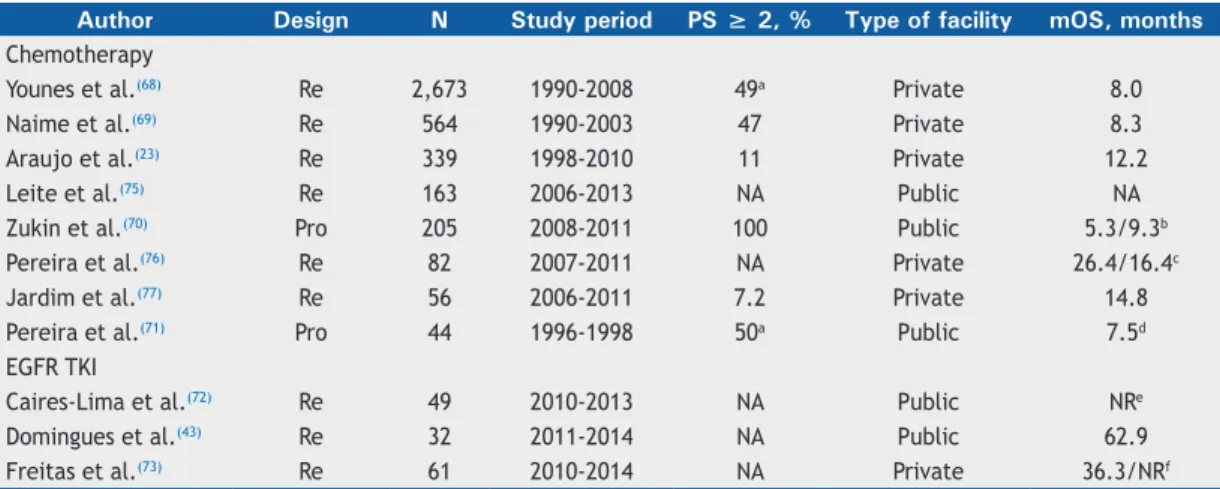Luiz Henrique Araujo 1,2,a
Texto
Imagem




Documentos relacionados
Prognostic significance of metastases to mediastinal lymph node levels in resected non small cell lung carcinoma.. Surgery for stage IIIA-N2 non small cell
Survival and prognostic factors in patients with Non-Small Cell Lung Cancer treated in private health care.. Sobrevida e fatores prognósticos em pacientes com câncer de pulmão de
Clinical model to predict survival in chemonaive patients with advanced non-small-cell lung cancer treated with third-generation chemotherapy regimens based on eastern
The objective of the present article was to analyze the importance of social, behavioral, and clinical factors on the survival time of patients with non-small cell lung cancer
The aim of this study is to investigate whether there is a correlation between anemia, other clinic- pathological factors and survival in patients with advanced NSCLC treated
Mutation in the tyrosine kinase domain of epidermal growth factor receptor is a predictive and prognostic factor for gefitinib treatment in patients with non-small cell lung
(2015) Baseline and Trend of Lymphocyte-to-Monocyte Ratio as Prognostic Factors in Epidermal Growth Factor Receptor Mutant Non-Small Cell Lung Cancer Patients Treated with
Quantification of Cell-Free mSHOX2 Plasma DNA for Therapy Monitoring in Advanced Stage Non-Small Cell (NSCLC) and Small-Cell Lung Cancer (SCLC) Patients.. Bernd Schmidt 1 , Julia